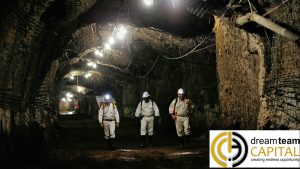A Business Plan helps you set clear goals and guidelines for how you will manage your business, to set employee goals, and obtain funding. A mining business plan is pivotal to starting a new, expanding your current, or acquiring an existing mining business.
South Africa is a world leader in mining. The country is famous for its abundance of mineral resources, accounting for a significant proportion of world production and reserves, and South African mining companies are key players in the global industry.
South Africa is incredibly rich in natural resources, with large reserves of some of the most valuable minerals on the planet found below its surface. Industrial scale mining in South Africa began in the 1850’s with the establishment of the first copper mine. Then, in 1867, diamonds were discovered in Hopetown, and in 1870 gold was discovered. Since then, the mining industry has become hugely important to the country, contributing roughly 219.5 billion South African Rand (roughly 12.8 billion U.S. dollars) in 2021 to South Africa’s Gross Domestic Product (GDP). Furthermore, the total value of mining industry merger and acquisition transactions in South Africa reached nearly 9.2 billion U.S. dollars in 2022.
Important Aspects of a Mining Business Plan include:
The executive summary
This section is arguably the most important section of the business plan. It must be concise, specific, and well-written. Many of the people who review your business plan will decide, based solely on the executive summary, whether to continue reading. A good executive summary provides a brief snapshot of the plan, highlighting sales, spending, and profit summary figures. The summary emphasises factors that will make the business a success. It must contain sound numbers for market size, trends, company goals, spending, return on investment, capital expenditures, and funding required.
For new businesses or businesses seeking funding, credibility and excitement are key elements of the executive summary. Venture capitalists receive hundreds of plans each month, and just a few are actually read from cover to cover. When the plan is the vehicle used to attract financing or investment, the executive summary should make it clear to a potential investor why this is a sound investment.
Business background/description
The business background section of your business plan generally consists of two to four sections that present information that is specific to your business. The business background identifies the goals and objectives of the business by explaining in general terms what business you are in or want to be in.
Product or service description
The product/service description is a form of marketing copy that describes a business’s offerings to customers. Describe the exact details and nature of your product and/or service.
Market analysis
The market analysis allows you to get a good understanding of your industry outlook and target market. Competitive research will show you what other businesses are doing and what their strengths are. The analysis presents your conclusions regarding external market factors that will affect your business. It examines the totality of the business environment in which you will compete.
Organisation and management plan
Tells the reader how your company will be structured and who will manage it. Describe the legal structure of your business. Use an organisational chart may be used in this section.
Financial projections
Supplement your funding request with financial projections. Your goal is to convince the reader that your business is stable and will be a financial success. If your business is already established, include income statements, balance sheets, and cash flow statements for the last three to five years. If you have other collateral you could put against a loan. Provide a prospective financial outlook for the next five years. Include forecasted income statements, balance sheets, cash flow statements, and capital expenditure budgets. For the first year, be specific and use quarterly, or monthly projections. Make sure to clearly explain your projections, and match them to your funding requests.
Annexures
Use your appendix to provide supporting documents. Common items to include are credit histories, CV’s, product pictures, letters of reference, licenses, permits, patents, and other legal documents.
At DTC…
We understand the intricacies of the requirements and criteria for a custom and accurate business plan. Our developments are used to create a vision for businesses, secure funding, secure non-repayable business grants, attract team members and/or manage the business. Whether you are using the business plan to raise funding and/or non-repayable business grants, we guide you through the process and provide access to our funding network.
Contact us for more information and assistance with your Mining Business Plan


